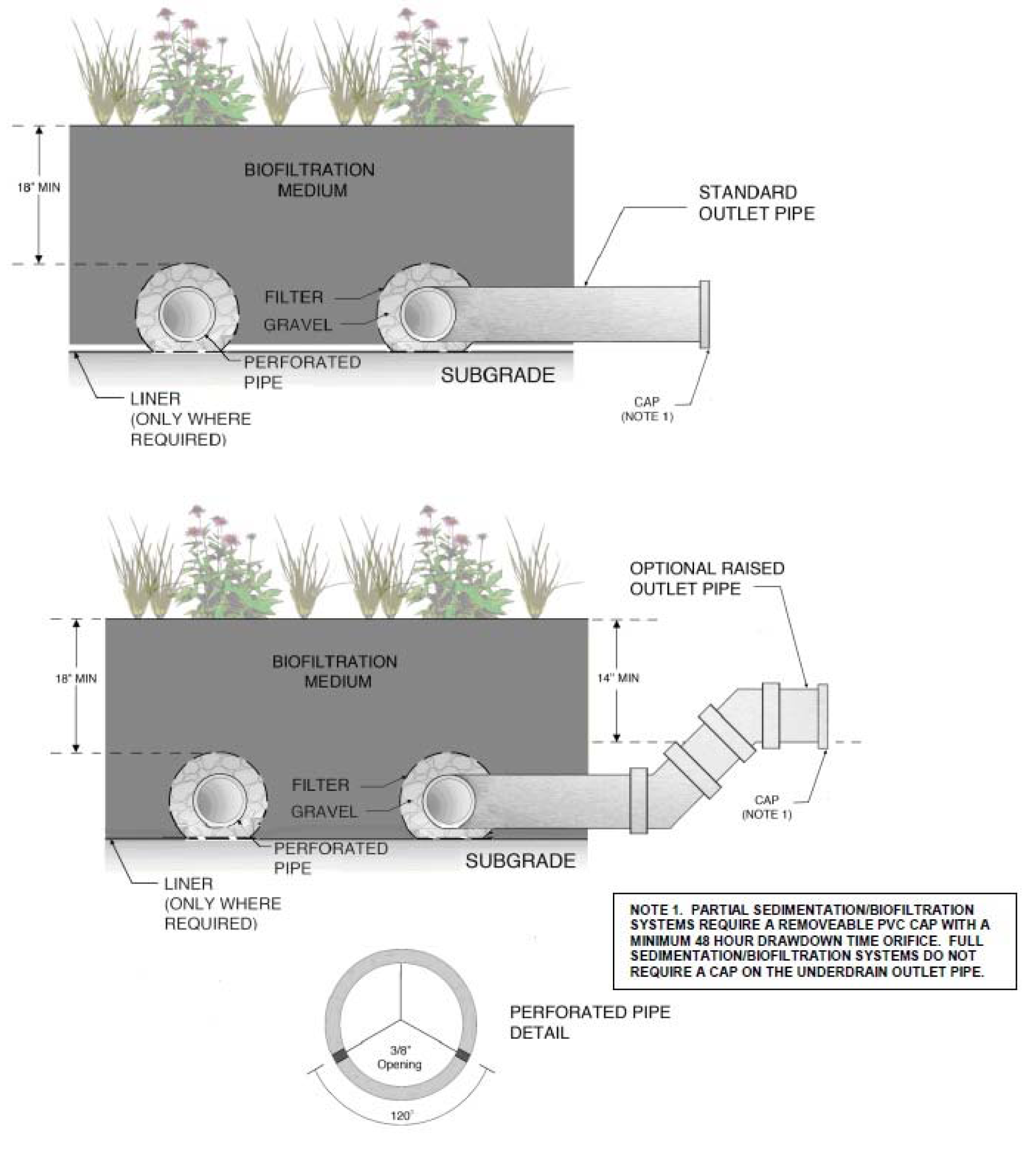Natural biofilters provide an eco-friendly solution for purifying water at home. As awareness of environmental issues grows, many individuals are seeking sustainable alternatives to traditional water purification methods. A biofilter utilizes natural processes to remove pollutants from water, making it an excellent choice for enhancing water quality without relying on harsh chemicals. Not only are these systems effective, but they can also be cost-efficient and relatively easy to construct using readily available materials.
Opting for a DIY biofilter allows you to use natural resources like wood chips and compost to create a system that not only improves water quality but also supports local ecosystems. In this guide, you will learn how to build your own natural biofilter, including the selection of appropriate materials, the construction process, and maintenance tips for long-term use. Additionally, you will discover the advantages of using a biofilter over conventional methods, troubleshooting common issues, and understanding local regulations.
Whether you’re purifying greywater for irrigation or simply looking to improve your home’s water quality, constructing your own natural biofilter is a gratifying and environmentally-friendly project.
Why Choose a Natural Biofilter for Water Purification?
Natural biofilters serve as a sustainable alternative to chemical treatments by utilizing biological processes to filter and clean water. These systems leverage natural materials such as wood chips, compost, and gravel, encouraging beneficial bacteria to thrive, which effectively breaks down harmful substances in the water.
Research indicates that natural biofilters can often outperform commercial products in terms of effectiveness and long-term maintenance. For instance, wood chip-based systems can last anywhere from two to four years with minimal upkeep, making them a practical choice for home water purification. Additionally, these filters contribute positively to surrounding ecosystems by providing habitats for microorganisms and plants.
In summary, investing in a natural biofilter combines eco-friendliness, affordability, and efficiency, making it an ideal solution for improving water quality sustainably.
Infographic comparing natural biofilters and chemical filtration methods (Source: Elsevier)
The Essential Ingredients for Your DIY Biofilter
Creating a natural biofilter requires specific materials. The key ingredients include:
- Wood Chips: This serves as the primary filtration medium, providing structural support and aiding in microbial growth.
- Compost: This adds nutrients and beneficial microorganisms; however, it should be used in smaller quantities compared to wood chips.
- Gravel: Used at the bottom of the biofilter to promote drainage and prevent clogging.
For effective greywater treatment, the recommended ratio for a DIY biofilter is approximately 80-90% wood chips and 10-20% compost. This ensures a porous structure which allows for effective water flow and aeration, crucial for the microorganisms breaking down pollutants.
When sourcing materials, consider their size and quality. Ideally, wood chips should be larger than 75mm to maintain optimal flow rates. Overall, you can expect to need around four to eight hours for the entire construction process, depending on the complexity of your design.

Display of materials needed for constructing a biofilter (Source: Ponds Guide)
Crafting Your Own Biofilter: Step-by-Step Guide
Building a natural biofilter is a manageable DIY project that can be accomplished by following these steps:
-
Choose a Location: Select a spot in your yard or garden that promotes natural drainage. It’s essential to place it away from buildings and water sources.
-
Excavate the Filter Bed: Dig a shallow trench, about 1-2 feet deep, that will house your filter. The size of the trench should align with your anticipated water flow and filtration capacity.
-
Layer the Materials: Begin by layering gravel at the bottom to facilitate drainage. Next, add a mixture of wood chips and compost according to the 80-20 ratio. Finally, cover the top with a thin layer of organic mulch for protection.
-
Add Collected Water: Once assembled, direct water into the biofilter to commence the filtration process.
-
Monitor and Adjust: Regularly check for clogs, odors, and overall performance. Periodic maintenance will involve flushing the system and raking the filter media as necessary.
Overall, you can expect the construction phase to take around four to eight hours. After installation, it’s advisable to allow some time for beneficial bacteria to establish themselves before utilizing the system completely.

Schematic diagram showing the layered construction of a biofiltration system (Source: ResearchGate)
Seeding Your Biofilter: Introducing Beneficial Bacteria
To ensure your biofilter operates effectively, it’s essential to introduce beneficial bacteria. These microorganisms play a significant role in breaking down pollutants in the water. Here’s how to successfully seed your biofilter:
-
Use Water from Established Systems: The most effective method for introducing beneficial bacteria is by taking water or media from an existing biofilter. This helps to introduce a well-adapted bacterial population.
-
Consider Commercial Preparations: Alternatively, you may use commercially available bacterial preparations, which come in either liquid or powder forms designed specifically for biofiltration systems.
-
Explore Additional Methods: Include options such as incorporating pond sediment or barnyard soil that can foster a balanced microbial community.
-
Monitor Conditions: Maintain optimal environmental conditions for bacterial growth by ensuring proper alkalinity and gradually introducing ammonia as food for the developing bacteria.
As your biofilter matures, the established microbial community will significantly enhance its filtration capabilities.

Flowchart illustrating the process of introducing beneficial bacteria into a biofilter (Source: ResearchGate)
Troubleshooting Your Biofilter: Common Issues and Solutions
Even the best-designed biofilter may encounter issues. Knowing how to troubleshoot common problems can help maintain its efficiency. Here are effective strategies:
Addressing Clogging
-
Identify Clogs: If water isn’t flowing correctly, flush the system using clean water through the filter media.
-
Inspect the Media: Check the condition of the wood chips and compost. If they feel soggy or contain excessive fine material, you may need to rake or replace them.
-
Regular Maintenance: Implement a routine to keep the flow unobstructed. Flushing and raking the materials periodically can prevent unnecessary build-up.
Handling Odors
-
Assess for Organic Buildup: Examine the water or media for signs of decay that could cause odors. Early flushing can alleviate this issue.
-
Ensure Proper Aeration: Make sure your biofilter has sufficient oxygen levels. This may be enhanced through regular water movement and adequate moisture management.
-
Monitor Nutrient Levels: It’s also crucial to check the nutrient levels regularly. Insufficient nutrients can lead to poor pollutant removal and potential odor issues.
By promptly addressing these common problems, you can keep your biofilter performing effectively and improve the quality of your treated water.

Infographic summarizing common issues and solutions for maintaining biofilter systems (Source: Elsevier)
Local Regulations to Keep in Mind Before Starting Your Project
Before constructing a natural biofilter, it’s essential to familiarize yourself with local regulations to ensure compliance. Here’s what you should know:
-
Permitting Requirements: Many jurisdictions require permits for biofilter installations, especially for those treating greywater. Be sure to consult your local regulations to determine what is required.
-
Setback Regulations: Various local codes outline the necessary distances that biofilters must maintain from property lines, buildings, and water sources.
-
Quality Standards: Specific areas may have regulations governing the quality standards for the water produced by biofilters, including turbidity limits.
-
Health Department Policies: Local health departments often oversee and inspect these systems to ensure environmental safety and compliance with local standards.
Before starting your project, it is wise to consult your local building office or health department to avoid any legal issues.

A map displaying different regulatory zones for biofilter installation in residential areas (Source: McClatchy)
The Future of Water Purification: Sustainable Practices and Innovations
As we consider the future of water purification, natural biofilters continue to evolve in response to environmental needs. Here are some trends to keep in mind:
-
Innovative Materials: The exploration of biologs and other renewable materials aims to improve biofilter efficiency while further reducing environmental impacts.
-
Design Adaptations: Ongoing efforts are directed towards creating biofilters that function effectively in urban and rural settings, accommodating various water management challenges.
-
Advancements in Microbial Research: Research is ongoing into specific microbial communities that optimize these systems, leading to improved methods for water purification.
-
Increased Public Awareness: Educational efforts highlight the environmental benefits of using natural systems for water treatment, enhancing community acceptance of biofilters.
By embracing these innovations, we can move toward more sustainable and efficient water purification practices.

Trends graph illustrating the growth of sustainable water purification practices (Source: Grand View Research)
Conclusion
Building your own natural biofilter is a rewarding project that contributes to sustainable living while enhancing water quality. By following the steps outlined in this guide, you can create a reliable water filtration system that effectively filters greywater while minimizing your environmental footprint.
From understanding the necessary materials and construction techniques to navigating local regulations, each aspect of this process empowers you to engage in cleaner, more sustainable water purification at home. With proper maintenance and monitoring, your biofilter can provide a long-lasting solution that benefits both your household and the ecosystem. Embracing this sustainable practice not only provides peace of mind; it also fosters a healthier environment for your community and beyond.

